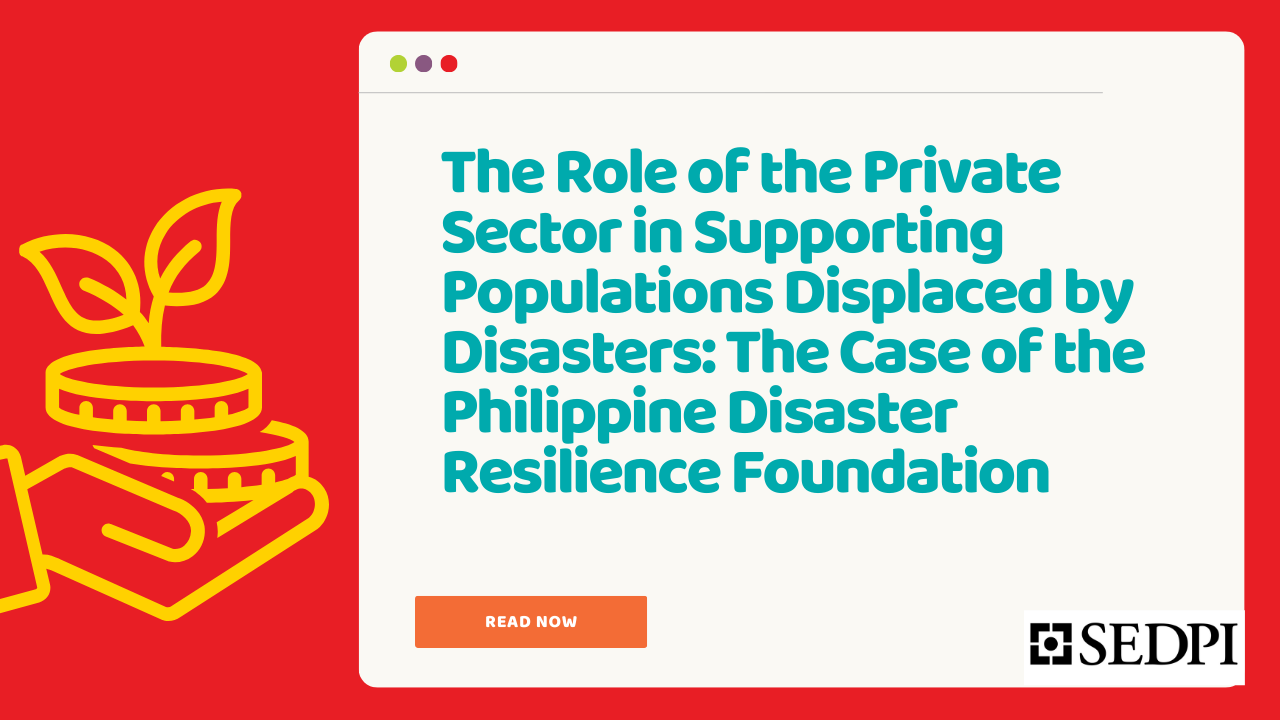Tag: private sector
-

The Role of the Private Sector in Supporting Populations Displaced by Disasters: The Case of the Philippine Disaster Resilience Foundation
This paper is written by SEDPI Chairperson, Mr. Edwin M. Salonga. You may download the copy of the whole article here: The Role of the Private Sector in Supporting Populations Displaced by Disasters: The Case of the Philippine Disaster Resilience Foundation Edwin M. Salonga*[1] Abstract Considered an immediate impact of disasters, displacement is counterproductive to development…